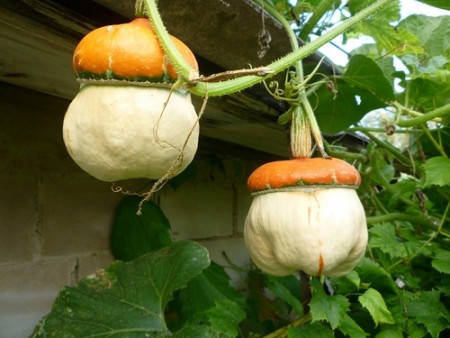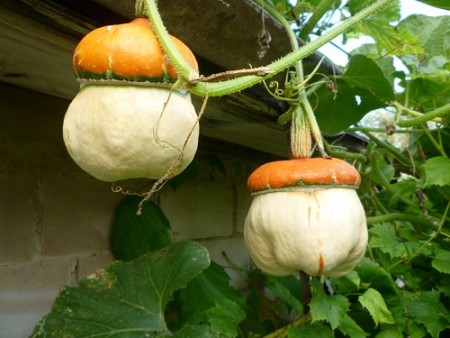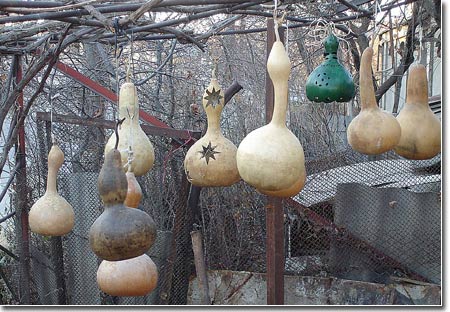The most important thing is to remove the fruits of decorative pumpkins in time, before the onset of cold weather and, especially, frosts. Being late risks the fact that the pumpkins will quickly deteriorate due to rot caused by fungal diseases.
But you shouldn’t pick unripe pumpkins either: they won’t be stored. When fruits are ready for harvesting, the stalk dries out. Pick the pumpkins together with the stem.
To remove pathogens that may well be present from the surface of the fruit, pumpkins can be immersed in hot water (50-60 degrees) for a few minutes or washed with soap, rinsed and immediately dried, wiped with alcohol and vodka.
To dry, pumpkins are laid out in a dry room, but not in direct sunlight. The fruits are regularly checked and rotten ones are removed immediately. After about a week, when the skin of the pumpkins
When they dry out, they are put away in a dark, but again well-ventilated room.
They are laid out in one layer so that the fruits do not touch each other, and it is better on some kind of lattice tray so that there is ventilation underneath. It is advisable to turn the pumpkins about once a week for more even drying.
The readiness of pumpkins can be determined by their weight (the fruits become light) and by the fact that the seeds rattle when shaken. As a rule, this happens after about six months of storage.
You can dry decorative pumpkins faster if, after drying for a week, you carefully cut off the top, scrape out the pulp, stuff the cavity with paper and place it in a well-ventilated area. The paper inside the fruit is changed periodically. In this way, the pumpkin can be dried in several weeks.
Well-dried pumpkins can be stored indefinitely. They are used to make various crafts.
The nutritional value of decorative pumpkin is very questionable: even young fruits are inferior in taste to zucchini, zucchini, squash, and real pumpkin.





 CUCUMBERS NEVER GET SICK, I'VE BEEN USING ONLY THIS FOR 40 YEARS! I SHARE A SECRET WITH YOU, CUCUMBERS ARE LIKE THE PICTURE!
CUCUMBERS NEVER GET SICK, I'VE BEEN USING ONLY THIS FOR 40 YEARS! I SHARE A SECRET WITH YOU, CUCUMBERS ARE LIKE THE PICTURE! You can dig a bucket of potatoes from each bush. Do you think these are fairy tales? Watch the video
You can dig a bucket of potatoes from each bush. Do you think these are fairy tales? Watch the video
 How our fellow gardeners work in Korea. There is a lot to learn and just fun to watch.
How our fellow gardeners work in Korea. There is a lot to learn and just fun to watch. Eye trainer. The author claims that with daily viewing, vision is restored. They don't charge money for views.
Eye trainer. The author claims that with daily viewing, vision is restored. They don't charge money for views. A 3-ingredient cake recipe in 30 minutes is better than Napoleon. Simple and very tasty.
A 3-ingredient cake recipe in 30 minutes is better than Napoleon. Simple and very tasty. Therapeutic exercises for cervical osteochondrosis. A complete set of exercises.
Therapeutic exercises for cervical osteochondrosis. A complete set of exercises. Which indoor plants match your zodiac sign?
Which indoor plants match your zodiac sign? What about them? Excursion to German dachas.
What about them? Excursion to German dachas.